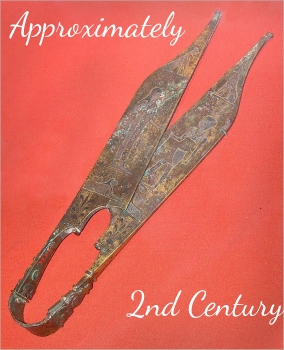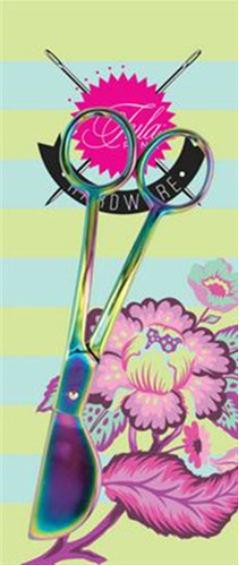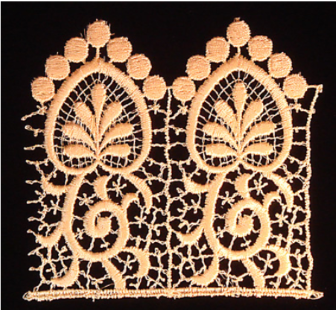As with any craft, there is always a language of its own. It may be jibbed-jabber to the uninformed, but it is very important to those who love and covet the creation. Here are a few that you may or may not know. If you disagree with my (personal) definition, please feel free to make a comment. This is not meant to be a perfect reflection of the interpretation, it is more for open discussion.
A center point – is
the center of the embroidery design but NOT necessarily where
the first stitch will land.
Adhesives – The use of adhesives to hold the fabric to the
stabilizer has long been an issue for costs and safety purposes. Careful use of ‘clear
tape’ or ‘painter’s tape’ can stabilize your project. Adhesive cut-away stabilizers,
however, are important for ‘wearables’, especially in children’s clothes. It
keeps the project stabilize for a long time after the needle has left its imprint..
Applique scissors - Scissors that are created for trimming
around applique while in the hoop. A tight cut without cutting into stitches is an absolute. The layout of the scissor assists in that project. For those of us who are (non-war & non-tragedy) history buffs, check out my blog and the accompanying article are really interesting.

A really good pair of applique scissors are worthy of being a generation to generation treasure. What a difference a few centuries makes!

Basting stitches - Long stitches that give your project
additional (and, IMHO) important to keep fabric from moving. It CAN be around
your design or, with care, under the design. I.E. use the same color for baste
as the design.
Birds nest – A top and/or bobbin thread that does not
create a stitch but continues to go around the bobbin holder creating a clump
of thread that stops all work until cleared.
Bobbin thread - Thread used on the bobbin of your
embroidery machine. Many thread brands make bobbin thread in 60 to 100 weight.
(See thread weight below.)
Density – The distance between the lines and the stitches
themselves. Tighter density creates a thick project.
Discovery sew - Prior to beginning your project, you need to assemble a 'test' sewing using the same fabric, design, thread and stabilizer to determine what you may need to adjust.
Embroidery thread - Thread
design specially for machine embroidery. It comes in silk, cotton, polyester or
rayon. Rayon has traditionally been the thread of choice. Polyester, with its
unsurpassed sheen, is becoming the new standard. Types of thread, as above, example
40#, varies in the circumference of the core of the thread.
File extension – Multiple
machine builders use a ‘proprietary’ 3 letters following the design name. They
create the machine and matching designs for their own brand. A few are more
flexible than others, i.e., “.pes” or “.dst” which MAY be used on multiple
machines.
Fill stitches - Stitches that create a ‘large area such as
the sky or the mountains. The method of patterns and stitch direction adds
depth and dimension.
Float (Stabilizer) - Stabilizer placed under or over the
hoop and fabric. Under the hoop adds a small amount of extra stabilizer in the
event you under stabilized your project. Over the hoop floating is necessary so
that stitches do not sink into a napped fabric such as a towel or felt.
Free standing lace (FSL) – The invention of machine embroidery
combined with water-soluble stabilizer created a new and unique design form.
The thread, by design, has the stabilizer removed and the project is left with thread
interwoven into a design. This beautiful FSL is from Adorable Ideas. It is available for $3.95 or get a set of 12 for just $5.00. John Deer, Adorable Ideas owner, is sharing these at a very low price to give a little back to the embroidery community. These are heirloom quality from his Grandfather's collection. You are going to love the designs ❣

Hoopless embroidery – With some fabrics, i.e., velvet, silk or terry cloth, hoop burn,
(leaving a permanent mark on the fabric), can occur. Hoop the stabilizer but
NOT the fabric. IMHO, basting (see above) is absolutely necessary for this
hooping stabilizer .
Keep in mind that vinyl and leather or like fabrics will hold the hole
permanently. In that case, you may want to use some type of adhesive like on a
Post-it-note.
Watch for Part 2, August 2, 2019 - especially if you are curious about
ITH - What the heck is that??
The third in my circus series is a lovable Monkey that will amuse young and old alike.
I enjoy creating my blog and hope you find it interesting/enlightening/amusing - or at least, a good break from your daily life. Thanks for joining me!